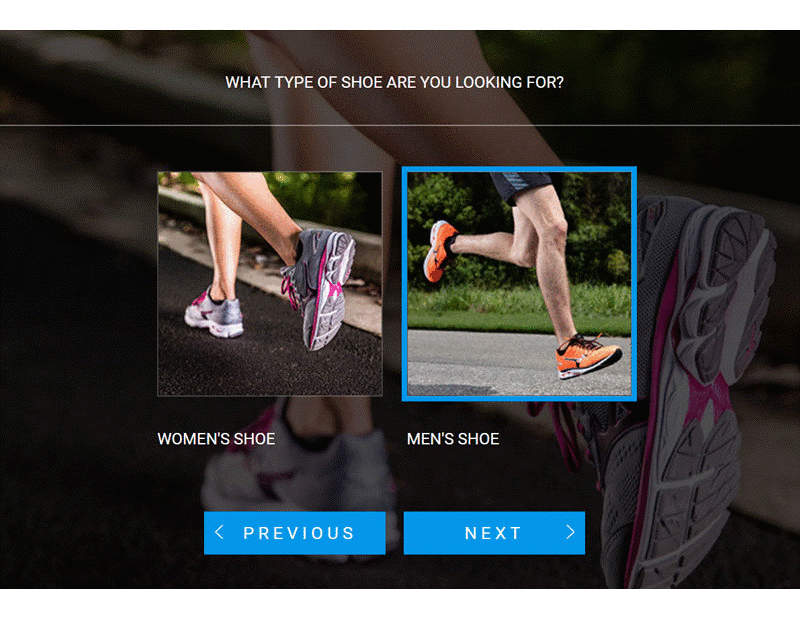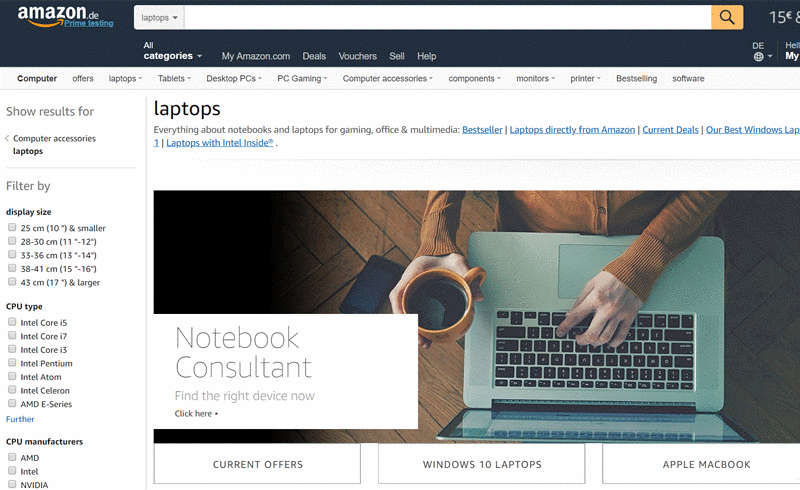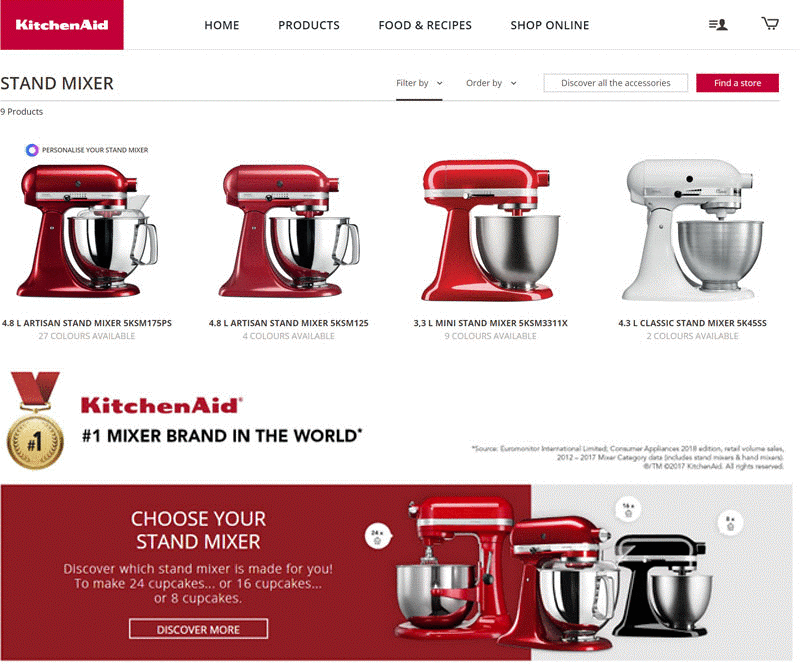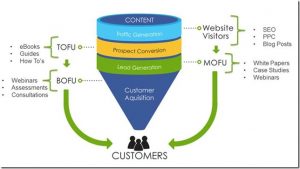— June 11, 2018
How many hours and marketing dollars do you spend on widening your purchase funnel to ensure you capture enough people?
Trying to hit conversion and sales targets, many businesses focus their efforts on the purchase funnel fringes, tweaking marketing campaigns or A/B testing the color of call-to-action buttons.
In so doing, they can make a critical misstep: neglecting the mid stages of the funnel that statistically experience the highest funnel drop-out rates and need the most attention.

This doesn’t cancel out the need for driving qualified traffic and people into your funnel. But minimizing funnel drop-out rates has distinct advantages over widening the funnel if you want to increase current and future sales. This approach concentrates your efforts on a group of people who already have awareness and some level of interest. Now you need to focus on keeping that interest.
How? By optimizing your purchase funnel where most prospects drop out.
Companies in different sectors integrate intelligent, conversational digital sales assistants at crucial stages in the customer decision-making journey to do just that. It eases website visitors into the purchase journey and increases the effectiveness of the purchase funnel by tackling the four most common funnel mistakes that usually lead to high drop-outs and missed sales opportunities.
Funnel Mistake #1: Not engaging funnel entrants in the right way
Failing to maintain the initial interest of new visitors is the biggest mistake. This happens if the landing page doesn’t address the specific needs of these first-time visitors or help them quickly find what they came for.
If they aren’t sure what their next step should be, they’d rather save their time and walk away than trying to navigate and explore your website on their own.
For example, KitchenAid uses a targeted banner on product category pages which reads “Choose your stand mixer – Discover which stand mixer is made for you” and speaks directly to visitors unsure where to begin. It leads them into a digital sales assistant that acts as a private tour guide through the assortment.
With thoughtful questions, information texts and even videos, the assistant takes shoppers by the hand and shows them their favorite things.
Example: KitchenAid Mixer Advisor
Funnel Mistake #2: Giving shoppers too many choices
Once, offering ‘plenty of choices’ was considered a good thing. Over the last few years though, it has become increasingly evident that too many options overwhelm customers. The recent Humanizing Digital 2020 Report found that already 42% of shoppers abandon a planned purchase altogether because of too much choice.
Having to choose from hundreds of options (or even 10 options) leads to problems like analysis paralysis, decision fatigue, and buyer’s remorse. If customers looking for a pair of shoes are presented with everything from $ 40 loafers to $ 1,250 Christian Louboutins, chances are slim that they will take the trouble to sort and filter.
Instead, a better experience begins by asking where the customer plans to wear their new pair of shoes. Then, depending on their answer, follows up with relevant questions to hone in on their intent, preferences, and needs, and limits the displayed options based on the provided information and persona.
They equip companies with the information to customize the experience and narrow down the displayed products for each visitor. Applying this tactic makes it easier for the customer to pick the best option and increases your chances of securing the sale.
Example: Mizuno Digital Running Shoe Consultant
The process of picking the right running shoes has become very involved. With continuous changes in sneaker design and technology, shoppers have a lot of choices and making the right decision requires a good background and understanding of the biomechanics of running, which not every shopper is privy to.
Like a salesperson in a store, Mizuno’s interactive running shoe consultant asks online shoppers question such as about pronation, the surface they’ll be running on and their personal running style. Using this information, Mizuno guides them to the most suitable selection of running shoes, helping them, both beginners and advanced runners, make the right choice.

Mizuno Digital Running Show Consultant
Funnel Mistake #3: Not personalizing your offer
If your business provides solutions across various verticals and caters to a variety of buyer personas, you very likely have a large and complex portfolio with some offerings that are irrelevant to a subset of your target audience.
Let’s say you provide a range of communication solutions to various industries from real estate to education and information technology. How can you share the right product information with the right level of detail in the right way to inspire and attract the right buyers?
Example: Saudi Telecom Company STC does it well –
STC provides telecom solutions to SMBs in over a dozen industries. Their digital sales assistant takes visitors to the right products based on their industry and business needs. The telco can dynamically package and offer the right product bundles, solutions and information with every click the customer makes.

STC – Business Solution Advisor
Funnel Mistake #4: Making them work to understand benefits
Features tell, benefits sell. Not only do customers want to know what benefits your product offers, but they specifically need to know how that product will solve their specific problems.
Telling your customers that your laptop has an 8-core processor with USB Type-C / Thunderbolt Ports or Nvidia Pascal Graphics will do little to convince and loads to confuse.
What you need to tell non-experts is that your laptop will stream movies and play games faster, display them in high resolution with rich colors, multitask seamlessly and last all day on a single charge.
Microsoft’s digital sales assistant, for instance, which they syndicated to several retail channel partners such as Harvey Norman or Amazon, plays up the selected benefits of each laptop, instead of tossing around technical jargon.
Example: Microsoft – Windows 10 – Perfect Device Advisor

Microsoft – Windows 10 – Perfect Device Advisor
If your digital sales assistant asked the right questions, you will know what your customers intend to do with the laptop, how often and how long they plan on using it and what specific perks they are looking for.
When presenting the product selection, you can then easily play up the benefits they wanted. This makes your customers feel like they have found ‘exactly what they wanted’ and increases their purchase confidence.
In the aforementioned Humanizing Digital 2020 report, 88% of shoppers said that a digital sales assistant made them more confident about a choice. And that’s what retailers and brands should strive for.
If you can elicit that kind of response from a customer, you’re headed towards a very fulfilling sale and possibly a loyal customer. That’s another way that digital sales assistants can help you ease customers in through your purchase funnel and score a successful conversion.
In Summary
So there you have them – the four most common, yet devastating, mistakes businesses make by not optimizing the crucial stages in the purchase funnel, and how a digital sales assistant can lead to substantial improvements.
Things were easier when online shopping was a novel experience and a few good features were enough to win customers over. Today, customers are digitally empowered and demand personalized attention at each step. Digital Advice in the form of digital sales assistants helps you deliver that level of personalization by providing assistance at the right stages of the purchase funnel.
It adds the “human touch” to your digital experience and prevents people from dropping off mid-sale or abandoning carts, yielding higher conversion rates consistently.
This article has been originally published on Guided-selling.org.
Digital & Social Articles on Business 2 Community
(86)









